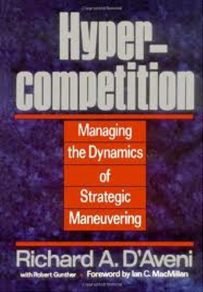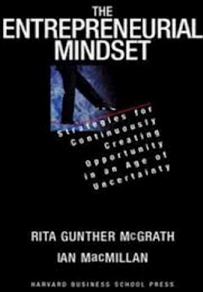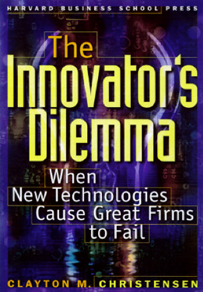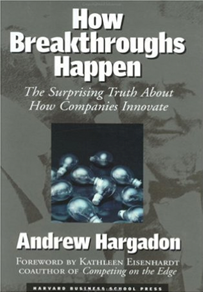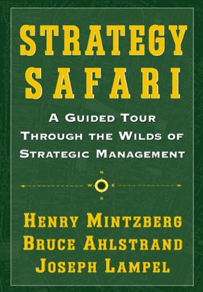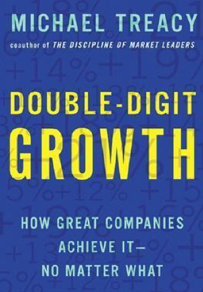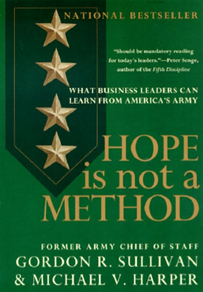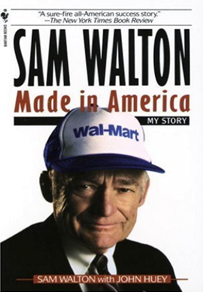Suggested Reading
Browse by Subject
-
Financial Statement Analysis
A Practitioners Guide
by Martin Fridson and Fernando Alvarez
In “Financial Statement Analysis,” Martin Fridson and Fernando Alvarez provide the analytical framework necessary to evaluate financial statements. “Financial Statement Analysis” provides guidelines on how to interpret balance sheets, income statements, and cash flow statements. Fridson and Fernando offer information for maximizing the accuracy of forecasts and a structured approach to credit and equity evaluation. Filled with real-life examples and expert advice, "Financial Statement Analysis,” will help non-financial managers gain a firm understanding of the techniques needed to interpret financial statements.
-
Hypercompetition
Managing the Dynamics of Strategic Maneuvering
by Richard D’Aveni
In "Hypercompetition," Richard D'Aveni contends that competitive moves and countermoves escalate so quickly today that the traditional sources of competitive advantage can no longer be sustained. To compete in an environment in which advantages are rapidly created or eroded, D'Aveni argues that a company must fundamentally shift its strategic focus. He constructs an operational model that shows how firms move up "escalation ladders" as advantage is continually created, eroded, destroyed, and recreated through strategic maneuvering in four arenas of competition: (1) cost-quality advantages, (2) timing and know-how advantages, (3) strongholds using entry barriers and, (4) deep pockets. Using examples from hypercompetitive industries, D'Avenie demonstrates how hypercompetitive firms succeed in dynamic markets by disrupting the status quo and creating a continuous series of temporary advantages. “Hypercompetition” is an operating manual of strategy and tactics for leaders of companies in hypercompetitive industries.
-
The Value Profit Chain
Treat Employees Like Customers and Customers Like Employees
by James Heskett, Earl Sasser, and Leonard Schlesinger
Heskett, Sasser, and Schlesinger asked the question of why a few service enterprises seem to be consistently better at what they do than their competitors. The authors argue that focusing on the employee-customer relationships will enable any organization to deliver results and process quality and still be a low-cost provider. It is their premise that "today’s employee satisfaction, loyalty, and commitment strongly influence tomorrow’s customer satisfaction, loyalty, and commitment and ultimately the organization’s profit and growth." Heskett, Sasser, and Schlesinger call this quantifiable set of relationships The Value Profit Chain and show that, when it is used as a simple organizing principle, it becomes an effective, fundamental driver of change in any organization. The Value Profit Chain should be read by every forward-thinking manager.
-
The Entrepreneurial Mindset
Strategies for Continuously Creating Opportunity in an Age of Uncertainty
by Rita McGrath and Ian MacMillan
"The Entrepreneurial Mindset" is a blueprint for building entrepreneurial organizations. Rita Gunther McGrath and Ian MacMillan have written both a guide to energizing the organization to find tomorrow's opportunities and a set of entrepreneurial principles, which can be used to transform your market. Using lessons drawn from leading entrepreneurs and entrepreneurial companies, "The Entrepreneurial Mindset" presents a set of practices for capitalizing on uncertainty and rapid change. This book provides simple but powerful ways to stop acting by the old rules and start thinking as an entrepreneur. "The Entrepreneurial Mindset" is about succeeding in an unpredictable world. It will help everyone from entrepreneurs to managers of large corporations develop insights to build entrepreneurial organizations.
-
The Innovator’s Dilemma
When New Technologies Cause Great Firms to Fail
by Clayton Christensen
Innovation expert Clayton Christensen says outstanding companies can do everything right and still lose their market leadership—or worse, disappear altogether. Focusing on "disruptive technology," Christensen shows why most companies miss out on new waves of innovation. In all types of businesses, successful companies with established products will get pushed aside unless managers know when to let go of traditional business practices. Using the lessons of successes and failures from leading companies, "The Innovator's Dilemma" presents a set of rules for capitalizing on the phenomenon of disruptive innovation. Christensen explains: When it is right not to listen to customers; when to invest in developing lower-performance products that promise lower margins and; when to pursue small markets at the expense of seemingly larger and more lucrative ones. "The Innovator's Dilemma" will help managers see the changes that may be coming their way and will show them how to respond in order to succeed.
-
How Breakthroughs Happen
The Surprising Truth About How Companies Innovate
by Andrew Hargadon
Engineer and social scientist Andrew Hargadon contends that our romantic notions about innovation as invention are actually undermining our ability to pursue breakthrough innovations. Hargadon argues that breakthroughs are the result of occupying a unique position in a networked landscape across which ideas, people, and objects from past technologies travel and are creatively recombined in new ways that spark new technological revolutions. Inventors "borrow" existing ideas from an arena, and then bring together the physical artifacts and the people necessary to apply those ideas elsewhere. This process, which Hargadon calls "technology brokering, " has been the force behind numerous celebrated inventions. “How Breakthroughs Happen” takes readers behind the scenes—from Edison's Menlo Park lab to IDEO—to illustrate strategies for sourcing, nurturing, and exploiting ideas in new ways for new markets.
-
Strategy Safari
A Guided Tour Through the Wilds of Strategic Management
by Henry Mintzberg, Bruce Ahlstrand, and Joseph Lampel
No other book synthesizes the entire history and evolution of strategic management in the way that “Strategy Safari” does. In a colorful, jargon-free and straightforward guide, top strategy authors Mintzberg, Ahlstrand & Lampel clearly set out and critique each of the ten major schools of strategic management thinking to facilitate intelligent, informed strategy formation. In the process, “Strategy Safari” makes sense of a field where enormous amounts of confusion exist. “Strategy Safari” is a wonderful primer on business strategy – interesting and insightful.
-
Double Digit Growth
How Great Companies Achieve It—No Matter What
by Michael Treacy
Michael Treacy uncovers how great companies master growth each year and how all businesses can identify and exploit opportunities for increased revenues, gross margins, and profits. Treacy's main point is simple—it is possible to grow any business by 10 percent or more, year after year, in good times and bad. He addresses the challenge of double-digit growth with five disciplines of growth: (1) keep the growth you have already earned, (2) take business from your competitors, (2) show up where growth is going to happen, (4) invade adjacent markets, and (5) invest in new lines of business. Treacy supports his argument with case studies of well-known and little-known companies that have achieved growth year after year based on this diversified approach. Treacy’s makes a compelling argument that sustainable, double-digit growth is a realistic and attainable business goal for any business.
-
Hope Is Not a Method
What Business Leaders Can Learn From America’s Army
by Gordon Sullivan and Michael Harper
Since the end of the Cold War, the United States Army has been reengineered and downsized more thoroughly than any other business. In the early 1990s, General Sullivan, army chief of staff, and Colonel Harper, his key strategic planner, took the post-Cold War army into the Information Age. Faced with a 40 percent reduction in staff and funding, they focused on new peacetime missions, dismantled a cumbersome bureaucracy, reinvented procedures, and set the guidelines for achieving a vast array of new goals. "Hope Is Not a Method" explains how this process took place and shows how the Army's experiences are relevant to businesses. From how to stay on top of long-range issues to how to maintain a productive work force during times of change, it offers invaluable lessons in leadership and provides proven tactics any business can implement.
-
Sam Walton
Made In America
by Sam Walton
In “Made in America,” Sam Walton offers plenty of advice and detail about how he managed to work against the odds and challenges of growing up in the Great Depression to becoming the richest man in America. In a story rich with anecdotes, Sam Walton explains the philosophies and strategies behind Wal-Mart's rise from nothing to be the largest retailer in the world in one generation. Nobody can deny Sam Walton's success and everybody can learn from his story. He never claimed to be the foundation of all the ideas that made him successful but showed how he could weave what he learned from others into a great fabric of success. In this book, you'll meet the man and journey with him as he grew his business step by step to the giant that it is.



